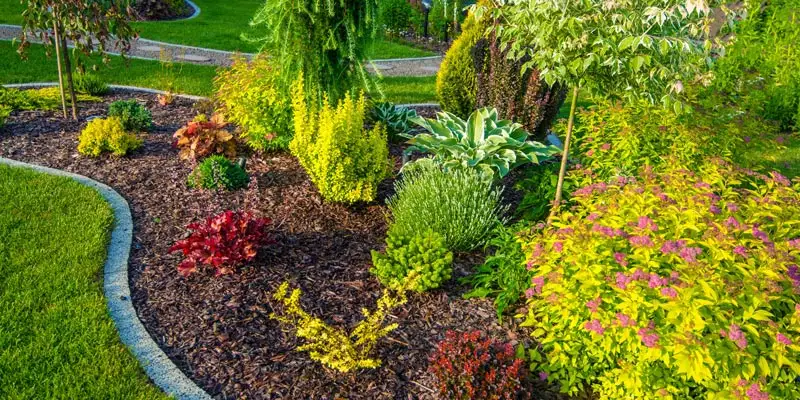The Greatest Guide To Landscape Design
The Greatest Guide To Landscape Design
Blog Article
Our Landscape Design Ideas
Table of ContentsThe Ultimate Guide To Landscape DesignMore About Landscape Design4 Simple Techniques For Landscape DesignWhat Does Landscape Design Do?
When designing a property landscape, the most crucial action is to place an intend on paper. Establishing a master strategy will save you time and money and is more probable to result in an effective design. Landscape Design. A master plan is established via the 'design process': a detailed technique that takes into consideration the environmental conditions, your wishes, and the components and principles of styleThe 5 actions of the style process include: 1) performing a website inventory and analysis, 2) establishing your needs, 3) creating practical representations, 4) establishing theoretical style plans, and 5) attracting a last layout strategy. The initial 3 steps establish the aesthetic, functional, and horticultural demands for the style. The last two steps then apply those demands to the development of the last landscape strategy.
This is a critical step for both plant option and positioning and locating household tasks and functions. It's crucial due to the fact that the same climate conditions that affect the plantstemperature, humidity, rain, wind, and sunlightalso impact you, the user. The next step is to make a listing of your needs and desiresthis helps you identify how your backyard and landscape will certainly be made use of.
The practical representation is then made use of to situate the task spaces on the site and from this layout a theoretical plan is developed - Landscape Design. The last action is a final layout that includes all the hardscape and planting information that are needed for setup. Throughout the layout process there are 10 vital points to consider: for plant choice and activity location by considering what you want and need to help establish forms and organize areas by marking activity areas and relating to aspects for both the setting and the customer by making use of massing and layering strategies such as shift areas and centerpieces in the products, the shades, and the surface area appearances for the growth and maintenance of plants by utilizing lasting layout practices A detailed inventory and analysis of the website is necessary to identify the ecological conditions for plant development and the finest use of the site
Landscape Design Can Be Fun For Anyone
The sort of dirt establishes the nutrients and moisture readily available to the plants. It is always best to make use of plants that will certainly prosper in the existing soil. Although soil can be changed, change is often costly and many times inadequate. Existing vegetation can supply hints to the soil type. Where plants grow well, keep in mind the dirt conditions and utilize plants with similar growing requirements.

Sun/shade patterns, the amount and size of direct exposure to sun or shade (Figure 1), produce microclimates (sometimes called microhabitats). Recording website conditions and existing vegetation on a base map will reveal the location of microclimates in the lawn. Plants normally come under 1 or 2 of four microclimate categories-full sun, partial color, shade, and deep shade.
Number 1. Sun and color patterns. Credit Scores: Gail Hansen, UF/IFAS It is essential to note all the status quo on a precise base map when doing the website supply (Figure 2). Landscape Design. Utilities such as power lines, sewage-disposal tanks, additional resources underground energies and roofing overhangs identify plant location. Utilize a property surveyor's plat of your home for the borders and location of your home.
How Landscape Design can Save You Time, Stress, and Money.
Budget problems consist of the materials, preliminary installment prices and the on-going upkeep expenses. Identify the moment and money you are prepared to put into maintaining the plants and hardscape-be practical concerning your intentions and ability. Number 3. Existing usage locations. Credit History: Gail Hansen, UF/IFAS Number 4. Proposed usage areas. Credit: Gail Hansen, UF/IFAS There are several landscape layout styles- from simple to complex, but it is practical to select one to guide your plant and material choice.

Determine if you wish to open your yard, close your backyard, or a little of both, to these sights. Simply put, do you want the garden to you can try these out confine the room around you and relate mostly to your house, or do you desire the yard to open views and look exterior, associating to the environments? This will offer you a beginning factor to think concerning a style.
Some Known Factual Statements About Landscape Design

This is called "local color", which suggests it fits with the surroundings. There are both form motifs and design themes. Every yard must have a form theme, but not all yards have a style motif. Many household gardens have no particular style other than to mix with the house by duplicating information from the style such as products, shade, and type.
In a type motif the organization and form of the rooms in the lawn is based either on the form of your home, the shape of the locations between your house and the home boundaries, or a favored form of the home owner. The kind style establishes the form and organization (the layout) of the spaces and the web links between them.

Report this page